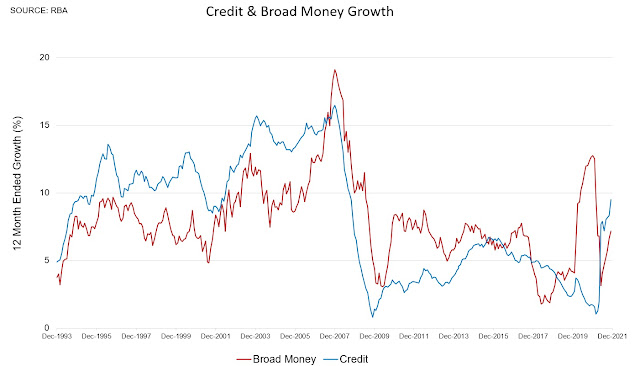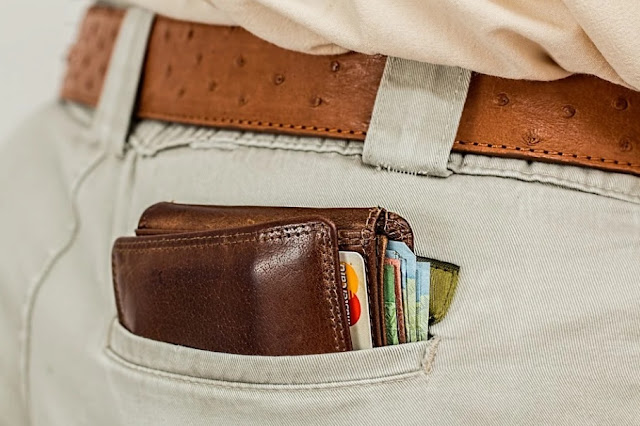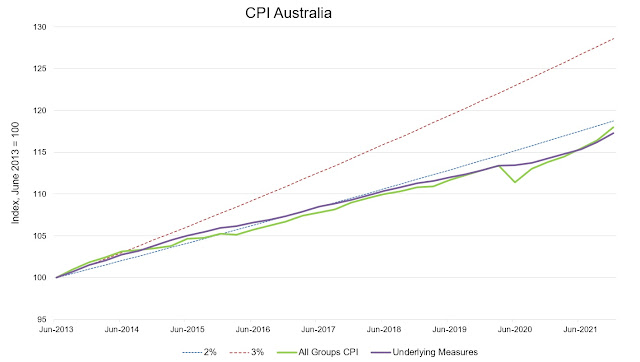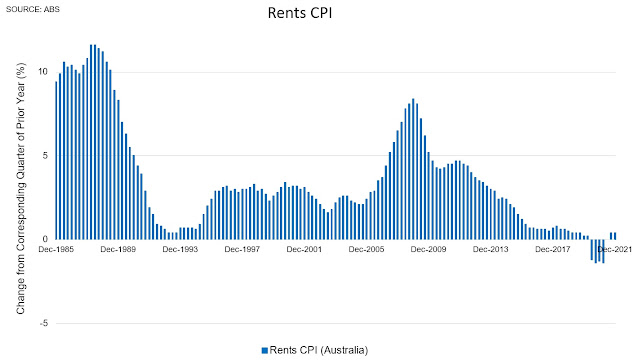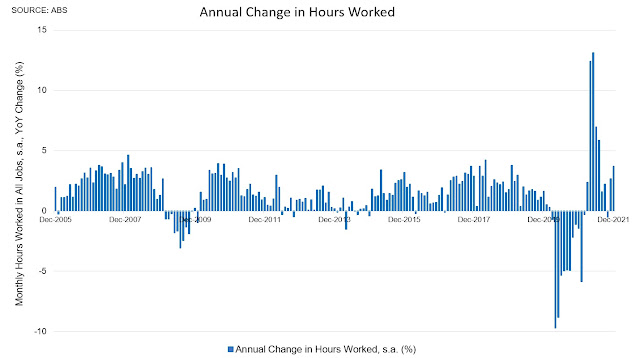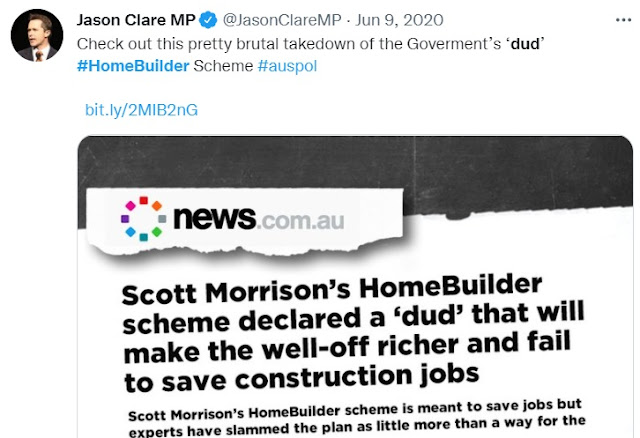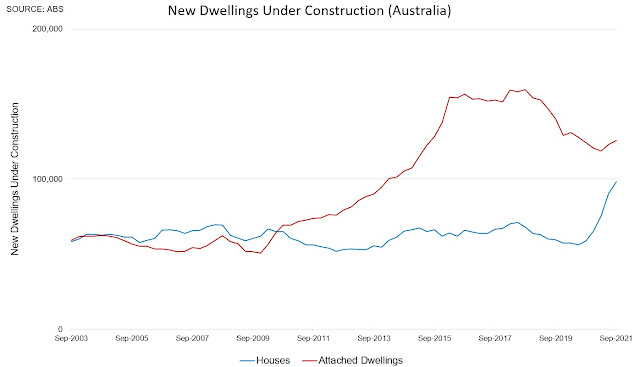Pete Wargent blogspot
Monday 31 January 2022
Here come the backpackers
Credit was flowing in late 2021
Friday 28 January 2022
Reaching for yield?
Tuesday 25 January 2022
Inflation back in the target band
Inflation stirs a bit
Muchos excitement on the social media as annual underlying inflation increased to 2.63 per cent for the trimmed mean measure (and 2.68 per cent for the weighted median).
So inflation is, for now, well and truly back in the target band, after a long hiatus.
The wrap
Overall, this was a strong reading, with inflation driven by fuel, food, and in particular new dwelling costs (up by another 4.2 per cent in Q4, after a 3.3 per cent increase in Q3).
The Reserve Bank may not be in a rush to hike though, given that annual wages growth is 2.2 per cent, and expectations for pay rises are still anchored at low levels.
Fiscal support will also be wound back over the next year or two, and it's not yet clear how the economy will track when the massive fiscal support is withdrawn.
In any case much of the inflation relates to supply chain issues in 2021, which will be mostly resolved later in 2022 - certainly for food and new dwelling costs - so hiking interest rates while real wages are negative possibly wouldn't serve much useful purpose.
Still, stock markets didn't like it much, the XJO being down over -3 per cent at 6,923 (public holiday tomorrow, so there will be no rising from the dead today).
Monday 24 January 2022
The regional renaissance & how to invest like a futurist
Futurist investing
Hugely insightful from futurist Steve Sammartino on this week's podcast here (or click on the image below):
Thursday 20 January 2022
Unemployment rate fell to 4.2pc (before Omicron)
Wednesday 19 January 2022
HomeBuilder boost works through
There were many, many sceptics about the government's HomeBuilder boost.
Job ads rolling over
Investing in commercial vs residential prpperty
Tuesday 18 January 2022
This is why it's time to take a look at commercial property
Commercial property pod
This week's podcast, featuring Steve Palise - considers what types of commercial property investment might be worth a look.
Tune in here (or click on the image below):
Friday 14 January 2022
Lending rebounds in November
Lending up
Lending for housing increased 6.3 per cent in November, well ahead of survey expectations.
The dollar value of lending to investors continues to trend higher, to the highest level since 2015, which is probably just as well given that asking rents have been surging.
It was a pretty strong release, overall, but it's not likely to signify a renewed boom in lending, given that interest rates are expected to rise from here.
Thursday 13 January 2022
Canberra and Darwin vacancy rates increase
Wednesday 12 January 2022
Get set for pay rises++
Job vacancies at all-time high
A welcome break from the endless jabbering on coronavirus case numbers and absurd immigration rules shows job vacancies tearing to an all-time high of 396,100 in November, for a thumping 59 per cent year-on-year increase.
Job vacancies in November were absolutely miles above their pre-pandemic levels.
New South Wales saw an all-comers record of 120,900 job vacancies, while Victoria wasn't too far behind at 106,000, with substantial year-on-year increases seen across the board.
I get that all this is divisive issue - heck, people on my Twitter feed are calling for permanent border closures, the construction of quarantine camps, lockdowns for the unvaccinated, making unvaccinated people pay for their own healthcare, and goodness knows what else.
Whatever, it's a personal blog: Australia needs to get the borders open as soon as practicable so that business and supply chains can function properly.
---
OK then, just a short note on the unmentionable.
The booster stroll-out gathered a little pace today, with a further 242,629 boosters delivered in 24 hours, taking the total of boosters to 4.1 million.
In total, some 44¾ million doses have been delivered up until January 11.
Mercifully the case fatality rate of the Omicron strain has proven to be considerably lower, as has been evidenced elsewhere in the world.
The latest figures for Australia show a CFR for COVID-19 falling to just 0.2 per cent at the last count, down from 3.3 per cent a year earlier.
Monday 10 January 2022
Sydney unit supply dries up
Unit approvals fizzle
Only 757 units were approved in Sydney in November - with Delta disruptions probably a factor - as low as we've seen for a monthly total in about a decade.
I think we'll end up with a unit shortage in Sydney, and sooner than people expect (so does Tim Reardon, Chief Economist of the HIA).
Over the year to November, there were more than 229,000 dwellings approved, which is a very strong annual number...albeit now fading.
Most likely dwelling construction will fade through 2022, thus in time becoming a headwind for the economic recovery.
You can find more comprehensive details, as ever, from data king James Foster here.
In Sydney today myself, and staying in town for a couple of weeks - my first visit in a YEAR.


